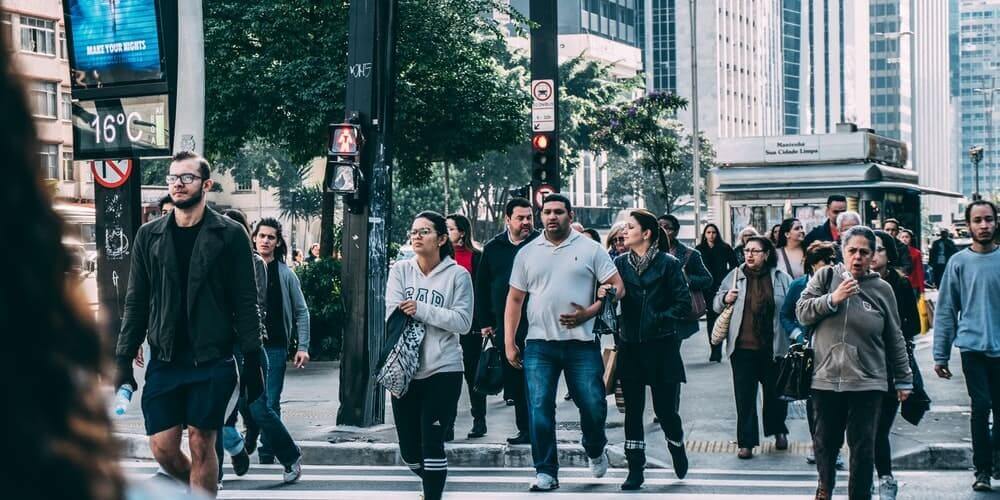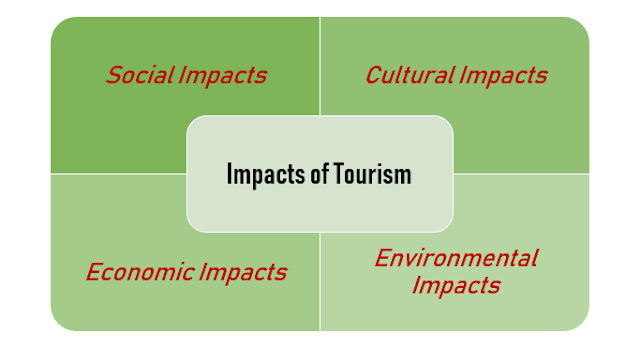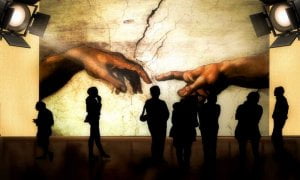Social and Cultural Impact of Tourism: Tourism industry in the 21st century is witnessing unprecedented growth and it catalyses social progress and cultural revival while acting as an engine for income and employment generation.
Tourism is bringing great benefits to destinations world over and has become an instrument for poverty alleviation and sustainable development. Propoor tourism, volunteerism, indigenous tourism and several other neo-age forms have indeed revolutionized the socio-cultural undercurrents pertaining to the all-round development of tourism destinations. Impact of Tourism
Know more about Tourism Status Worldwide
Let us consider how tourism paves way for social harmony and cultural revitalization.
Basically there are four types of impact of tourism.
Social Impact of Tourism.
The power of tourism in breathing new life into dying cultural expression has been widely recognized. Moreover, tourism has the capacity to nourish the social values and other dimensions through greater appreciation and sharing.

i) Positive Impacts.
a. All Inclusive Characteristics.
Tourism is no more the privilege of a chosen few who prefers just the luxurious components of the industry. The tourist market globally configures very diverse segments encompassing geographical background, demographics categories, and the like.
It is not only the exclusive women group travelers who have become globetrotters and ventures to visit the exotic havens of the world; solo woman travelers are also going places in the current era.
Know more about Tourism Status Worldwide
Social tourism is yet another form of tourism that brings people with limited means to the mainstream pradding them to visit and enjoy tourism destinations. M. Hunziker at the Second Congress of Social Tourism held at Vienna and Salzburg in 1959 proposed the following definition:
“Social tourism is a type of tourism practiced by low income groups, and which is rendered possible and facilitated by entirely separate and therefore easily recognizable services. This form of tourism helps people with limited budget travel with assistance from NGO’s incentives and schemes under budget travel extended by the public system of tourism, and discounts offered by the private sector agencies.
Also read about Transportation in India
b. Social Stability and Peace.
Tourism provides sufficient impetus for people-to-people interaction, which is part and parcel of the Track-II Diplomacy. This diplomacy constitutes cultural relations not at the government level, but at the level of the common citizens of countries.
Tourism fosters social stability by instilling noble ideas and free thoughts thorough healthy interactions and various other transactions between the hosts and the guests wherein both are benefited. It broadens the mind of people and as a result, there is increased acceptance, mutual trust, and more tolerance. These factors contribute profusely towards strengthening social stability and world peace.
You may interested to read about Indian Railway
c. Appreciation of Social Norms, Values, and Practices
Sociologists categorically printout that as tourists visit several nations and regions and get back to their respective countries their vibes in appreciating own countries and regions become very profound.
Know more about Tourism Status Worldwide
It is indicated that tourists tend to see their countries in a newer light and value tremendously the intricate aspects of their social customs and practices. Another dimension here is that when tourists see better practices in the areas they visit, there is dire enthusiasm built up in them to introduce implement it in their own places.
d. The Educative Value and Social Upliftment.
Tourism is in a way education without classrooms. The interpersonal learning developed during interactions between the tourists and the host community is certainly an enriching experience for both the parties.
The new vision acquired as a result of different engagements with tourism – as tourist, local community, employer or employee will definitely have positive reflections on the society as well. There will be more refinement in the social processes and lifestyle practices.
Know more about Tourism Status Worldwide
Outdated and irrational traditionally acquired tendencies are replaced with progressive ideals and activities. Also, the real sense of modernity is captured and nurtured through tourism which is deemed to have made the world a ‘global village’. When the niceties are imbibed by societies and hazardous practices are disowned and discarded, it will culminate in social upliftment.
Also read about Transportation in India
e. Contribution to Social Capital.
Tourism ushers social progress in manifold ways. In addition to the advancements made in the sphere of infrastructure and superstructure, destinations experience immense growth as regards educational institutions, health centers, pollution control systems, intensive security, cultural institutions, etc.
Social welfare measures receive excellent impetus as a result of tourism making a mark in the destination. Enhanced livelihood sustenance programmes have gained grounds in many a tourist centre as an offshoot of such measures. Artisans are trained to improve the quality of their works. Impact of Tourism
You may interested to read about Indian Railway
Social enterprises including rehabilitation centres, de-addiction centres, product innovation & development institutions, and local empowerment agencies are having a productive time due to the regular influx of tourists and the genuine interest taken by voluntary tourists and other stakeholders. The local handicrafts and emporiums get ample thrust with respect to the marketing support from tourism promoters both in the private and public sectors.
Know more about Tourism Status Worldwide
ii) Negative Impacts.
a. Degeneration of Tourism Centres.
Tourism is an avenue misused and exploited by antisocial elements. Tourists are unfortunately being targeted by those elements and they become easy victims of crime. It is the responsibility of the local communities to properly guide the tourists in such a way so as to avoid dangerous places and areas.
Owing to the prostitution, child abuse, drug trafficking, robbery and sexual assault on tourists, the image of many destinations have been eroded. The brand takes a beating when there is degeneration of destinations because of the crimes committed there.
b. Resentment and Hospitality of the Host Population.
Resentment of tourists by the host population as described by Doxey’s Irridex (Irritation Index) is found in some destinations. There are several reasons attributed to the host quest conflicts. One main reason is the sharing of local facilities and resources.
Know more about Tourism Status Worldwide
When tourists start using the same resources which the host population feels that are meant for them the spurt in conflict arise. This gets even more serious in the case of resources’ crunch. The local communities attribute the problem to the tourists.
c. Demonstration Effect.
This is a very serious effect as the consequences could be far-reaching. When certain members of the host community get enchanted by the lifestyle of the tourists and start aping/ imitating them at the cost of their own social mores and cultural dispositions, the local culture and values suffer.
There is some kind of erosion of values as the host community members, particularly the youngsters discard their social standing and etiquettes and start following the tourists’ activities. The foundation of the society itself is shaken. Now a day’s hosts start following the dressing pattern and fashion of tourists in many destinations.
Know more about Tourism Status Worldwide
d. Human Rights Abuse.
Exploitation of the local community by tourists is increasing day by day. As criminals and other miscreants enter, the tourism destinations in the garb of tourists, the crimes committed goes overboard. They start exploiting the host community by cheaper means. Sexual abuse, narcoticism, smuggling, poaching, etc., are rampant in many wildlife tourism destinations and hill stations. Such nefarious elements throw the rules and regulations in the wind and act according to their whims and fancies.
You may interested to read about Indian Railway
Another side of the problem is the displacement of the local population when their lands are taken over the tourism development. They are evicted from their lands without proper rehabilitation measures being initiated. In the name of life seeing tourism, which brings tourists face to face with the host society too, several exploitative practices are in vogue.
e. Antagonism of Hosts.
When there is unwanted noise, congestion, drunkenness, voyeurism, gambling, rowdiness and other excesses occurring in tourism centres, it results in antagonism by the hosts.
Also read about Transportation in India
Fig. 1 Doxey’s Irridex – 4 Stages
| Irritation |
| Apathy |
| Antagonism |
| Euphoria Area |
Antagonism in this sense means an expression of open enmity towards the tourists by the hosts.
e. Issues Linked to Standard of Living.
Excessive tourism development can bring about undesirable social effects and at the same time, there is quick money for some quarters, which increase their standard of living. If there is no equity in terms of affluence due to tourism, there are chances for the occurrence of internal strife within the host community.
Know more about Tourism Status Worldwide
f. Employment Issues.
Tourism projects are flourishing expansively. The sanction of tourism projects comes with a tag of ensuring jobs for the host population. When the vacancies are filled by job seekers from other regions or when the expertise is being imported from distant places, the local community starts objecting to the proceedings of the tourism enterprises.
g. Identity Crisis.
When more and more tourists visit a destination, the inherent social fabric of the community gets affected and eventually loses its identity too.
You may interested to read about Indian Railway
Cultural Impact of Tourism.
The lifestyle changes at the places of tourist importance are quite encouraging. At the same time, planners have to mitigate the consequences of demonstration effect.

i) Positive Impact of Tourism.
a. Revitalization of Cultural Symbols.
One of the main purpose of tourism is to foster understanding and appreciation of other cultures, peoples, and places. Another worthy aim of tourism is to exchange knowledge and ideas. Through cultural tourism the experiential dynamics of the visitors is elevated without the cultural elements, every destination is just a place and in no way can stimulate the tourists. In that sense, culture becomes the main attraction of tourism.
Know more about Tourism Status Worldwide
Development of cultural factors within a destination is a primary means of enhancing the products to attract tourists. It also creates a favorable image of the tourism centre among tourists, both foreign and domestic. The cultural channels help in the presentation of the destination.
Also read about Transportation in India
Fig.2. Major Cultural Symbols Promoted as part of Tourism
| Cultural Symbols | |||
| Visual Reminders of History | Religion | Language | Entertainment |
| Food | Architecture | Literature | Museums |
| Music | Sculpture | Handicrafts | Ruins |
| Dance | Painting | Performing Arts | Mausoleums |
| Art | Intangible Elements | Fashion | Artefacts |
| Archaeology | Films | Rites Rituals | Events |
It is a fact that due to tourism scores of art and cultural forms are being preserved across the globe. Many a dying cultural form is being revived to be showcased for tourists. If not for tourism, several cultural expressions would have vanished forever. Tourism also creates avenues for the artists and artisans to stage/depict their creative performances.
You may interested to read about Indian Railway
b. Cultural Relations and International Co-Operation.
Tourism plays a signature role in promoting cultural relations and forging international co-operation. Cultural organisations across the world are making their presence felt owing to the impetus provided by tourism. In the present day, tourism is instrumental in the inception of several cultural institutions. Plenty of cultural exchange programmes are being organised at the global level, thanks to tourism. This point out that tourism is intertwined with the cultural relations policies of many nations.
c. Promotion of Cultural Values.
When tourism supports cultural values, attitude, and behavior of the host communities in various destinations, one can observe that there is finest hospitality and service excellence. The host communities take pride in their cultural traditions. Tourism serves as a driving force to restore cultural vibrancy and attributes of the local population. On a similar vein, visitors also enriched after experiencing the cultural heritage and value systems in the destinations.
d. Economic Value of Cultural Sites.
Any cultural auditing will unveil the economic advantages of protecting and maintaining a cultural site. For example, there are lots of caves which are astounding tourism attractions. If it would have been left uncared for destruction, the revenue sources are being blocked. Similar is the case with most of the cultural manifestations. To point out yet another economic merit of cultural events, to attract tourists, the world over, different unique cultural programmes are offered as per a stipulated calendar during which tourists are drawn in hordes.
Know more about Tourism Status Worldwide
Also read about Transportation in India
e. Cultural Tourism and Income Generation.
Tourism contributes to the welfare of the local community in manifold ways. When fairs and festivals are rejuvenated to amuse the tourists, the host population is able to be performers or spectators of the events. Tourism also acts as an incentive to curb migration. The cultural programmes and revived monuments increase the inflow of tourists due to which plenty of business opportunities shall arise in the tourist places. This will improve their job and earning prospects. Apart of income generation, another benefit linked to cultural tourism is the raise in covertness of the significance of cultural artifacts and activities.
By organizing special interest tours to ruins, caves and other historical sites including the tombs of well-known personalities such as martyrs, litterateurs, etc. The host community can earn a good income. The members of the local population can also act as guides and facilitators. Selling antiques and souvenir articles to tourists is another source of income.
ii) Negative Impact of Tourism:
a. Commoditisation of Culture.
Cultural artifacts and events woo the tourists and they take great interest in enjoying them. Sometimes, the destination promoters are neglecting the richness of the cultural masterpieces and treating them as mere products or resources to invigorate the tourists. This happens even with deep-rooted traditional art forms. For the sake of formulating the art forms and artefacts as products to amuse the tourists, a lot of compromises are taking place.
b. Loss of Authenticity.
This is another related negative impact. In the name of entertainment of tourists, a lot of maneuvering and orchestration are dome with various cultural forms. There are tampering and mutilations happening with respect to indigenous cultural expressions of profound importance. In the process, the authenticity is being lost. Fake products are crafted and packages as genuine cultural artefacts. The tourists in a way are cheated and such tendencies from the destination promotes can eventually rebound wherein through negative word of mouth publicity the destination image will suffer. Staged authenticity or stage-managing the art forms for tourist’s enjoyment does not necessarily bring the desired results.
Know more about Tourism Status Worldwide
c. Disrespect of Local Customs.
Tourists are expected to respect local customs, codes, manners, and observances. When they violate the beliefs and values due to attitudinal problems or sheer carelessness, it leads to conflicts. The irresponsible conduct of tourists at the destination by engaging in littering, drug trafficking, irritable behavior, hooliganism, animosity towards hosts, etc. can hamper the relationship between the hosts and the guests. The moral and standard set at the destination should be regarded highly. Impact of Tourism
d. Museumisation of Culture.
As part of ethnic tourism, which promotes intimate contact the indigenous community, nowadays special tours are being arranged to their habitats. This is a tight rope walk as the tours can be construed as an intrusion into the privacy of the native habitats. The live cultural aspects of tourists, for example, husking, weaving, fishing using traditional methods, etc. are appropriate to be showcased for tourism though the exactitude of the programmes needs to be ascertained meticulously.
Also read about Transportation in India
e. Fashion and Obscene Conduct.
Tourism centres will have many traditional concepts as regards the dress codes for the people both visitors and the locals. In the name of fashion and modernity, tourists are sometimes found to overlook the etiquettes followed in the destination. Their fashion could be obscene conduct for the host community.
f. Food Observances.
Tourists cannot always expect the food items they have in their own native or other centres at the destination. Some cuisine may be taboo and tourists leaking them out of excitement can offend the native populace.
g. Child Labour and Child Sex Tourism.
This is a cultural hazard due to fast-paced tourism growth. One can find an army of children doing menial jobs in restaurant, hotels, wayside amenities, and other outlets. Sexual exploitation of children who perform art forms for entertaining the tourists is also on the rise.
You may interested to read about Indian Railway
The Socio-Cultural Considerations in Tourism Planning.
The planners must necessarily take into account the following socio-cultural perspectives while planning tourism ventures.
a. Standardization of Tourism Projects.
The license to operate tourism projects may be awarded only after the confirmation of the factors listed below:
i) The signing of agreements to recruit a good percentage of local community members.
ii) The project shall abide by local cultural norms and practices and is not violating them by any means.
iii) No child labour in the establishment.
Also read about Transportation in India
iv) Will take adequate measures, to curb prostitution, drug menace, gambling, smuggling, drunkenness, betting, and any other illegal activities.
v) Shall strictly sell authentic products.
b. Planned and Controlled Tourism Development.
Unplanned and uncontrolled tourism development is resulting in the deterioration of the socio-cultural strands of the destinations. For example, the construction of buildings for resorts and hotels flouting the local traditional architectural norms, using the raw materials and architectural style not in sync with the backdrop of the place causes visual pollution. Tourism planners must consult the local community members for any initiative and make them part of the decision-making process. This will enhance their pride and instill confidence in the cultural traditions. The bearing of demonstration effects can be offset by such efforts.
You may interested to read about Indian Railway
c. Preservation of Cultural Sites.
Vandalism, graffiti writing, and destruction are depreciating the priceless cultural heritage of humanity. These losses are irreparable and irreversible. The future of tourism is heavily dependent on applying brakes to the bulldozer-laden culture, which is negating the invaluable cultural monuments and historical attractions. Even leads for enacting laws and strengthening existing acts like the ancient monuments and archaeological remains act could be given sufficient impetus. Impact of Tourism
d. Diversification of Tourism Products for Budget and Accessible Tourists.
The creation of new tourism products to suit the requirements of budget and accessible tourists will certainly be a welcome move. The inception of barrier-free tourism infrastructure offers fillip to the social sensitivities of any destination. For example, disabled tourists would not be able to enjoy the vantage points of a hill station without the usage of a cable car.
e. Synergy between Tourism Stakeholders and Cultural Institutions.
More efforts to foster the effective coordination between tourism stakeholders in private and public sector, and prominent cultural institutions can go a long way in intensifying tourism promotion. Tourists will get chances interact with the exponents of famous art forms such as Mohiniyattom, Kathakali, and Ottan Thullal. Tourism officials can take a lead role in organizing training workshops and symposiums for rural artisans, craftsmen, weavers, painters, and performing artists.
Also read about Transportation in India
f. Tourism Amenities.
It is almost necessary that tourism destination appoints guides, lifeguards and tourism police. Authorized guides trained to disseminate authentic information on the historic centres and heritage attractions can enhance the appeal of the facets of culture in the place. The presence of tourism police can control the damages caused by reckless miscreants to the monuments.
g. Marketing Support of Souvenir Articles.
Tourists are always on the lookout for the memorabilia they can take home which stall trigger the memories of their visitations to tourist places. Brass ware, metal wares, mirror works, apparels, leather products handmade paper products, etc. are sought after souvenir articles. Traditional workers make these articles indigenously. If the promoters can chip in with the marketing expertise, the demand for the mind-blowing souvenir artefacts would spruce-up. Impact of Tourism
You may interested to read about Indian Railway
h. Integration of Policy and Planning.
The socio – cultural dimensions of tourism can be nurtured and productively nourished by the proper and systematic integration of policy and planning in a time bound fashion. The enamoring aspects of both society and culture can be the best showcased when packaged as tourist attractions. The action plan for cultural tourism development must take these into account. Similar is the case with social welfare and upliftment.
Also read about Transportation in India
The allocation of fiscal grants and aids to artists and artisans is central to the revival and continuance of many a traditional art forms and handicrafts. The source identification and streamlining of the tracks and mechanics involved in the distribution of funds are to be jointly discussed between tourism and cultural stakeholders. Impact of Tourism






